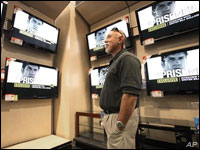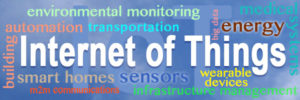
The evolving technological needs of consumers have prompted changes not only in tech support services, but also in the business strategies of technical support providers. Those providers need to adjust their business models in order to effectively meet consumers’ needs and remain relevant.
At first glance, many recent innovations would seem to eliminate the need for tech support. CE manufacturers and industry consortia have spent the last few years developing solutions that are easier to install and configure, with automated device discovery mechanisms built into the operating systems of the device, intuitive installation processes and “one-touch” security configuration.
As a result, the do-it-yourself approach has become the dominant way to setting up new devices within broadband homes, even for relatively complicated items such as a home network.
Parks Associates research finds 60 percent of U.S. broadband households now set up their home networks on their own, an increase of 11 percent from 2009. The DIY percentages are even higher for other devices, from smartphones to tablets, where the vast majority of consumers — 70-80 percent — set up them on their own.
Almost 75 percent of these DIY consumers report the process was convenient with minimal problems. This finding would seem to indicate a diminishing market for tech support; however, only 51 percent of these DIY consumers would prefer to set up devices by themselves next time, which indicates a significant opportunity for support services.
The Connected Home Environment
The digital home has transitioned from a few devices with independent functionality to a myriad of broadband connected devices that share computing resources and information. This connectivity and interdependence among devices make it difficult for consumers and technicians to isolate technical issues.
Approximately 25 percent of consumers with a networking-related problem contacted their broadband service provider for assistance, regardless of where they purchased their home networking equipment. Denying this assistance ultimately will hurt the service provider’s brand, especially as consumers want a solution that covers all their support needs, including disparate gadgets such as computers, tablets, and smartphones.
Parks Associates research finds 72 percent of consumers interested in technical support feel the service should be able to fix every technical problem they experience.
Companies should embrace this market opportunity by creating holistic support services that are dynamic and comprehensive. This type of solution covers the digital ecosystem of consumers’ homes as well as the lifecycle of their digital lifestyle products and services.
Holistic support involves two components:
- The extension of support services beyond product support to pre-purchase consultations, advice on devices and upgrades, and customer service ultimately aimed at enhancing the digital lifestyles of consumers, including proactive diagnosis and troubleshooting of consumers’ technical issues
- A variety of service touch points and business model options to resolve issues effectively and meet consumers’ needs
More than 75 percent of U.S. broadband households have a home network, and that’s expected to grow to approximately 91 percent by 2015. The connected home ecosystem will also expand as manufacturers continue to woo customers with more functionally integrated devices. Parks Associates believes that all models of major products and systems will evolve to include IP connections by 2016.
Holistic services represent revenue and brand opportunities for service providers, CE manufacturers, and retailers.
Service Providers
Service providers, including broadband, pay television, voice and wireless operators are adding new services to their portfolios and are playing a greater role in the digital home. They consistently face competitive threats from retailers, CE manufacturers, broadcasters and technology innovators, which offer service substitutes such as online video.
Google, for example, is making strides with Google Fiber, the company’s high-speed Internet and pay TV service. In this highly competitive market, service providers must be vigilant about keeping consumers happy and loyal.
The increasing use of residential gateways and advanced set-top boxes has not only enabled service providers to introduce advanced entertainment options to consumers, such as TV Everywhere/ multiscreen services, but also allows providers to bundle or include value-added services such as security, energy management, and home and automation applications. These devices can be further leveraged for the provision of technical support services.
The TR-069 standard, now commonly used in set-top boxes and residential gateways, enables bi-directional communication between the consumer’s devices and providers’ servers. By using these devices, service providers can enhance their technical support services through monitoring, proactive support and automated break/fix.
Retailers
Brick-and-mortar consumer electronics retailers in the U.S. have been steadily losing customers over the past few years. Retail stores are, in some cases, being relegated to the role of “showrooms” for consumers looking to inspect a product before buying online.
Retailers’ business strategies going forward should include measures to bring customers back into the stores, boost customer satisfaction and maintain loyalty. Providing holistic support is a means by which retailers can differentiate themselves and develop long-term relationships with consumers.
Most CE retailers have established premium technical support services to assist with the setup and installation of devices, as well as for troubleshooting common technical problems. Many also offer mobile handset protection plans and extended warranties for major consumer electronics.
Going forward, retailers are well positioned to offer more holistic or one-stop shopping for technical support services. They have the additional consumer touch point of the in-store help desk. This touch point gives consumers an option more affordable and convenient than having a technician visit their home. By extending premium technical support service to include pre-purchase advice, retailers can leverage the growing use of stores as research sites to drive consumers toward specific products or brands.
Consumer Electronics OEMs
Product manufacturers face declining margins as prices for major consumer electronics have fallen significantly over the past few years. OEMs are adding connectivity and service packages to differentiate their products and combat revenue erosion. Large CE manufacturers have historically provided technical support for their products, but establishing a service-oriented presence that extends across other product categories and brands would be a complex task. They do have two distinct competitive advantages, which can be leveraged in this market:
- They maintain the greatest presence on their computing devices; this positioning can be leveraged in marketing efforts for premium support services.
- Those with brick-and-mortar stores can provide help desk services from the store and use them to establish a brand association with customer services.
Building the Market
At heart, consumers want an efficient and comprehensive support solution that covers all their needs for computers, tablets and smartphones. Services that combine software solutions, on-call support and device repair/replacement will resonate with consumers.
The Geek Squad service from Best Buy, for example, is one of the leading technical support services currently available to consumers. Along with purchasing devices, Best Buy consumers can bundle services, which include device setup, product warranties and technical support. This value proposition resonates with consumers, who would otherwise have to seek these services from different entities, each charging additional monthly or transactional fees.
Service providers, retailers and CE manufacturers all have unique business characteristics which make them well-positioned to offer holistic premium technical support services. Consumers also indicate a preference to receive technical support from these players. Among those consumers who desire comprehensive technical support, nearly 50 percent are likely to use the service if it is offered by a retailer, service provider, or CE manufacturer.
Although there is great benefit in offering holistic premium technical support services, creating those services presents the additional challenge of managing consumers’ expectations of what constitutes basic (i.e., entitled) technical support and premium support.
Consumers differ widely in the amount that they are willing to pay for technical support services and show a slight preference for subscription-based plans versus per-call costs. They are more likely to use subscription support for other devices, such as smartphones, tablets and game consoles, than they are to use such support for a computer. Interestingly, the more devices a consumer owns, the more likely it is that they will purchase a technical support subscription.
Parks Associates estimates U.S. tech support revenues will exceed US$8 billion in 2017, benefitting the service providers, OEMs and retailers that can best leverage their market positions to deploy a comprehensive tech support solution.




































Social Media
See all Social Media